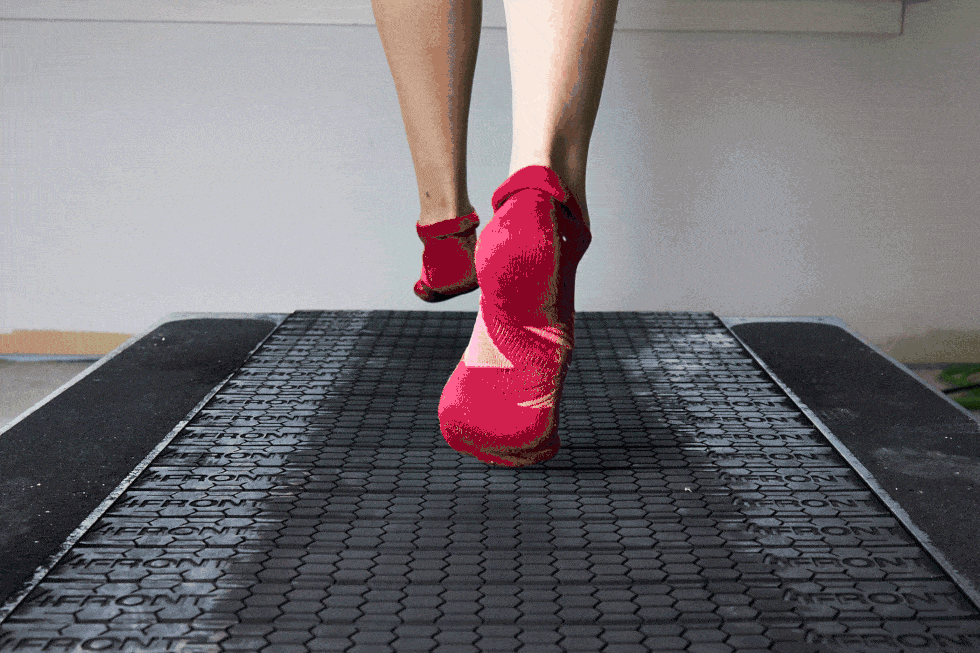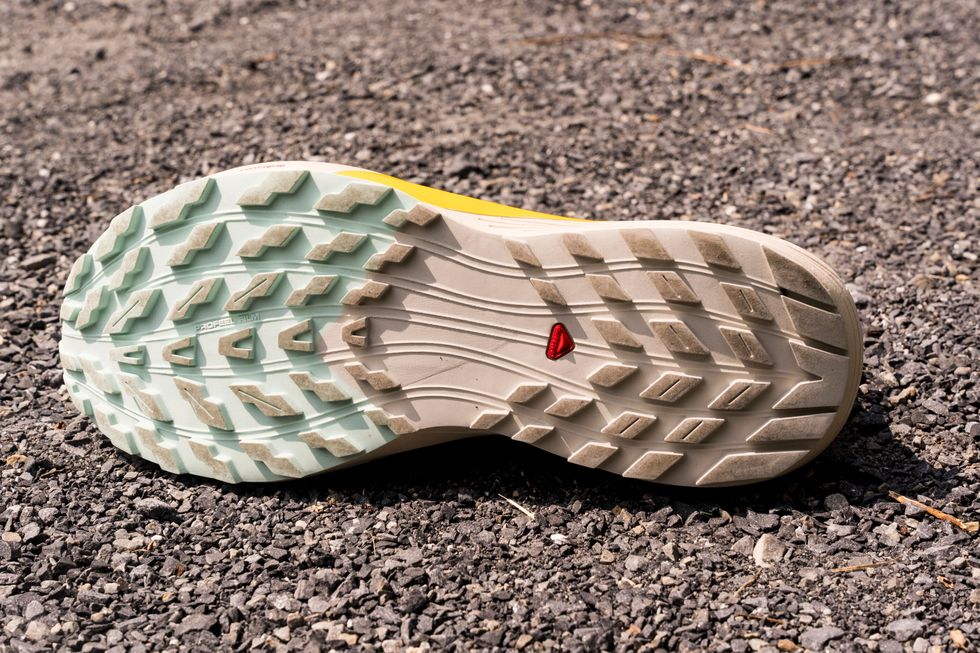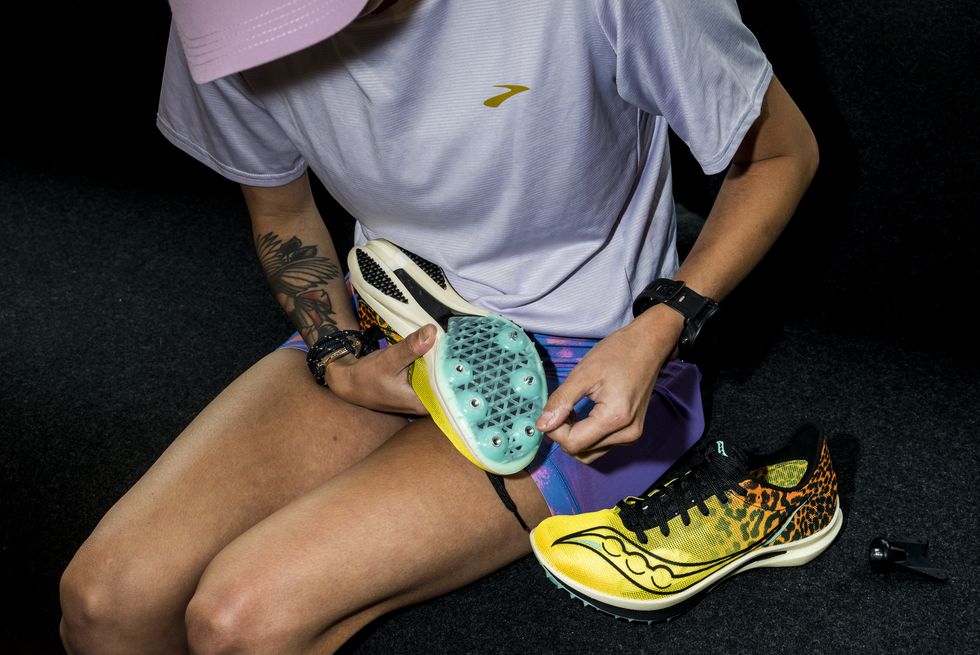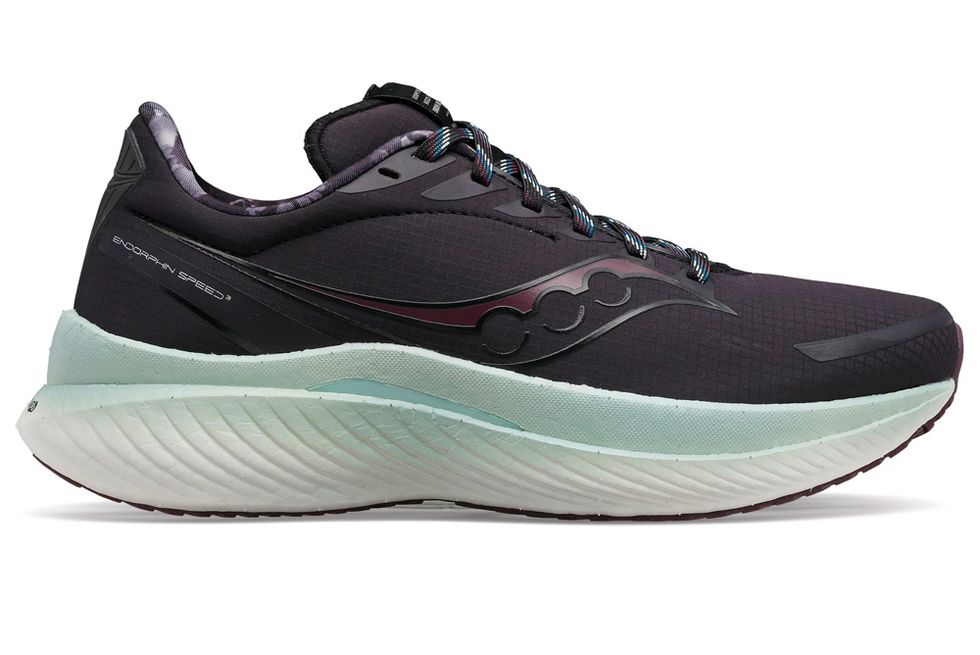Neutral or stability? Max-cushioned or minimalist? Here’s how to choose the best type for you

Choosing the best running shoe for you can be overwhelming, but we’re here to help. We offer easy methods to determine your arch type, shoe size, and gait style that will guide you along your shoe selection process. With your specific foot traits in mind, we’ll address the most important questions to ask yourself when you’re deciding between different shoe types.
Based on your needs, we’ll point you to the top suggestions from our fully-tested running shoe round-ups. After perusing this guide, all you’ll just need to decide is which colour best suits your style…
Identify your foot type
Before we get into the nitty-gritty on the different kinds of running shoes, we first need to address anatomy and biomechanics.
→ Types of arch
There are three arch types: low (flat), medium, and high. If you have flat or high arches, you may want to consider more cushioned trainers with built-in support. One simple way to determine what kind of arch you have is by using the Wet Test.
How to figure out your arch type:
- Pour a thin layer of water into a shallow pan
- Wet the sole of your foot
- Step onto a blank piece of heavy paper
- Step off and examine your footprint. Repeat these steps for the other foot
What arch type you have based on the Wet Test
→ Types of gait
Every runner has their own unique gait and motion mechanics. To describe gait, we often talk about pronation, the natural movement of your foot as it interacts with the ground when you land. Like arch types, there are also three types of pronation: neutral, overpronation, and underpronation (supination).
The school of thought used to be that overpronation and underpronation caused injury. However, this really only tells part of the story. The amount of pronation a runner can tolerate is highly individual — some runners will naturally pronate more than others, and this is simply part-and-parcel of their healthy running strides.
Unless you have a severe or diagnosed alignment issue, we recommend you choose your shoes based on what feels most comfortable to run in. That said, knowing your pronation can offer you a good starting point when determining which shoe type to try first.
Neutral
- Your foot rolls inward about 15 percent
- Impact forces are optimally distributed when landing
- Neutral shoes provide adequate support
Overpronation
- Your foot rolls inward more than 15 percent
- Common in people with flatter feet
- Stability shoes can help evenly distribute impact
Underpronation (or supination)
- Your foot rolls inward less than 15 percent
- Common in people with high arches
- Extra cushioning can help absorb impact
Knowing your gait will help you determine if you need a shoe with stability features — such as guide rails or a medial post — in the midfoot. For a gait analysis, you can do the following at home:
How to record a gait analysis

- Set up: Place a camera, smartphone, or tablet in landscape mode on a tripod. Alternatively, you can ask a friend to hold it
- Recording settings: Set your device to the highest resolution available. Record at normal speed, not slow motion—you can slow it manually later
- Background: A clean background can make detail easier to see later
- Surface: A good starting point is a flat, firm surface. While treadmills are often used for gait analysis due to their practicality, it’s better if you can record outdoors
- Process: Set up your camera so you can record your whole body side-on, and fill five to eight seconds of footage. Record footage from this angle at a variety of paces before doing the same from directly behind—running away from the camera—and directly in front—running towards the camera
- Additional Metrics: Measure your cadence (or strides per minute, SPM) by counting the number of steps you take within a 60-second interval. Many GPS running watches will automatically capture this data whenever you record a run
→ Shoe size
You can measure the length of each foot with paper, a pencil, and a friend. Refer to a shoe brand’s site to compare length and size. Know that brand sizing may vary.

Have a friend trace your foot for a more accurate silhouette.
How to Measure Your Foot Length
- Standing up straight, put one foot on a piece of paper and then draw an outline around your shoeless foot with a pencil. For the most accurate outline, you should have a friend trace your foot for you
- Using a ruler, measure the outline beginning from the back of the heel to the longest point of the foot (Depending on your foot shape, this point may be the tip of your big toe or second toe)
- Repeat these steps tracing your other foot. Record the measurements in centimetres. The bigger foot should be used to determine your shoe size
Knowing your gait, pronation, and foot length only gives you partial clues in finding the right shoe. Heading to your local running shop and being evaluated by a store associate and foot scanner will give you a clearer, more precise rundown on all of the above.
Evaluate terrain and conditions
Surface and environment are also key in your sole searching journey. Are you hitting the pavement, treadmill, or trail? Maybe you’re heading to the track. In the winter, will you be running through snow and slush?
→ Trail
There are two main things to consider before purchasing trail running shoes. The first is what type of shoe your feet need (think: stiff or pliable, neutral or stable, wide or narrow, high or low heel-to-toe drop). The second is what type of shoe the terrain demands. For the latter, think about whether the trails you encounter are technical or smooth, flat or steep, have loose or firm footing, and if they require you to cross water.

The Salomon Sense Ride 5 has 3.5mm lugs.
Rigid shoes with deep lugs (5mm+) are best on technical trails with poor footing, but they’ll also be far less forgiving—even uncomfortable—on road runs. These shoes will serve you better the more rugged the terrain and may work for hiking as well.
Hybrid shoes, on the other hand, have shorter lugs (2mm to 4mm) and a softer on-road feel than their burly siblings. These road-to-trail models are well-suited for soft singletrack and local wooded trails that don’t make you slow to a walk due to unsure footing.
→ Track
For hitting the track, you’re best served by a pair of spikes. These are extremely lightweight, stiff-soled shoes that envelop your feet and have pins (also called “spikes”) that screw into the outsole for extra grip. Track spikes have minimal structure in the heel, while spikes for middle and long distance have fewer pins at the forefoot and thicker midsoles for comfort. There’s no faster footwear for track running, and you’ll only want to wear them on those indoor and outdoor track surfaces. Spikes are not built for the pavement.

Track spikes require upkeep, including replacing worn down or lost pins.
Racing flats, which are lightweight shoes meant to maximise your effort, are more versatile than track spikes — you can wear them to run and race both on the track and on the road. Unless you’re a pro, lightweight running shoes (see below) will work just fine on the oval, though they’re not quite as fast around the turns as track spikes. Your legs, especially your calves, also don’t get beat up as badly in road shoes compared to spikes.
→ Winter weather
When it comes to winter running shoes, keeping your feet dry while running through rain and snow is very important. If your shoes get soaked, your feet will get cold, leaving you uncomfortable and potentially in danger of getting frostbite. To prevent this issue, many winter running shoes have uppers with an integrated water-resistant membrane.

Saucony
The Saucony Endorphin Speed 3 RunShield’s upper has a Gore-Tex membrane.
Gore-Tex membranes are the most common, though other brands have their own versions of waterproof uppers. These materials block light rain, snow, and splashes from puddles. The downside is that they can all make the upper less breathable. They also won’t stop water from soaking your feet at the ankles.
More shoe types to consider
→ Stability
We mentioned stability shoes when we talked about gait pattern and overpronation. Pronation occurs when your foot rolls inward as you transition from your heel to your toes for push off. This is perfectly normal; however, ankle or shin pain are common ailments if your gait exaggerates these mechanics. This is where stability shoes can help.
“Bars,” “rails,” and “medial posts” are buzzwords for the tech that brands build into midsoles to aid in alignment and relieve your feet from rolling inward excessively. Brooks and Altra use guide rails to help steer your feet and encourage a smoother heel-to-toe transition.
→ Cushioned
There’s plenty of overlap in running shoe types (i.e., max-cushioned shoes can also provide stability; many trail shoes are also zero-drop models). More-cushioned running shoes are best for long runs and recovery days when you need some plush support.
Shoe companies have developed signature foams that not only enhance softness, but also put a little more spring into your step. For instance, Asics’s lightweight FlyteFoam Blast+ provides a soft bounce and energy return to complement its protective Gel cushioning. Hoka combines its marshmallow-soft Profly+ foam with a rocker-style sole, designed to keep turnover quick and nimble with no loss of comfort.
→ Lightweight
Carrying less weight on your feet can result in less energy expenditure and more efficient running form. For that reason, lacing up a pair of lightweight shoes may be one of the easiest ways to boost your running performance. Data collected from gait analysis and impact testing has helped brands create proprietary foams and rubbers that weigh less and return more energy with each footstrike. These new midsole materials have led to shoes that can help you run faster and further — or, at the very least, feel more nimble on your feet.
→ Zero-drop
Zero-drop shoes, trainers with the same heel and forefoot stack height, are designed to encourage a more natural running stride. Similar to if you were walking barefoot, these shoes provide no additional heel lift; your heel and forefoot remain equidistant from the ground. However, zero-drop models can take some getting used to, so we recommend gradually incorporating them into your shoe rotation. You’ll build strength in your muscles, tendons, and ligaments as your foot acclimates to the zero-drop offset.

